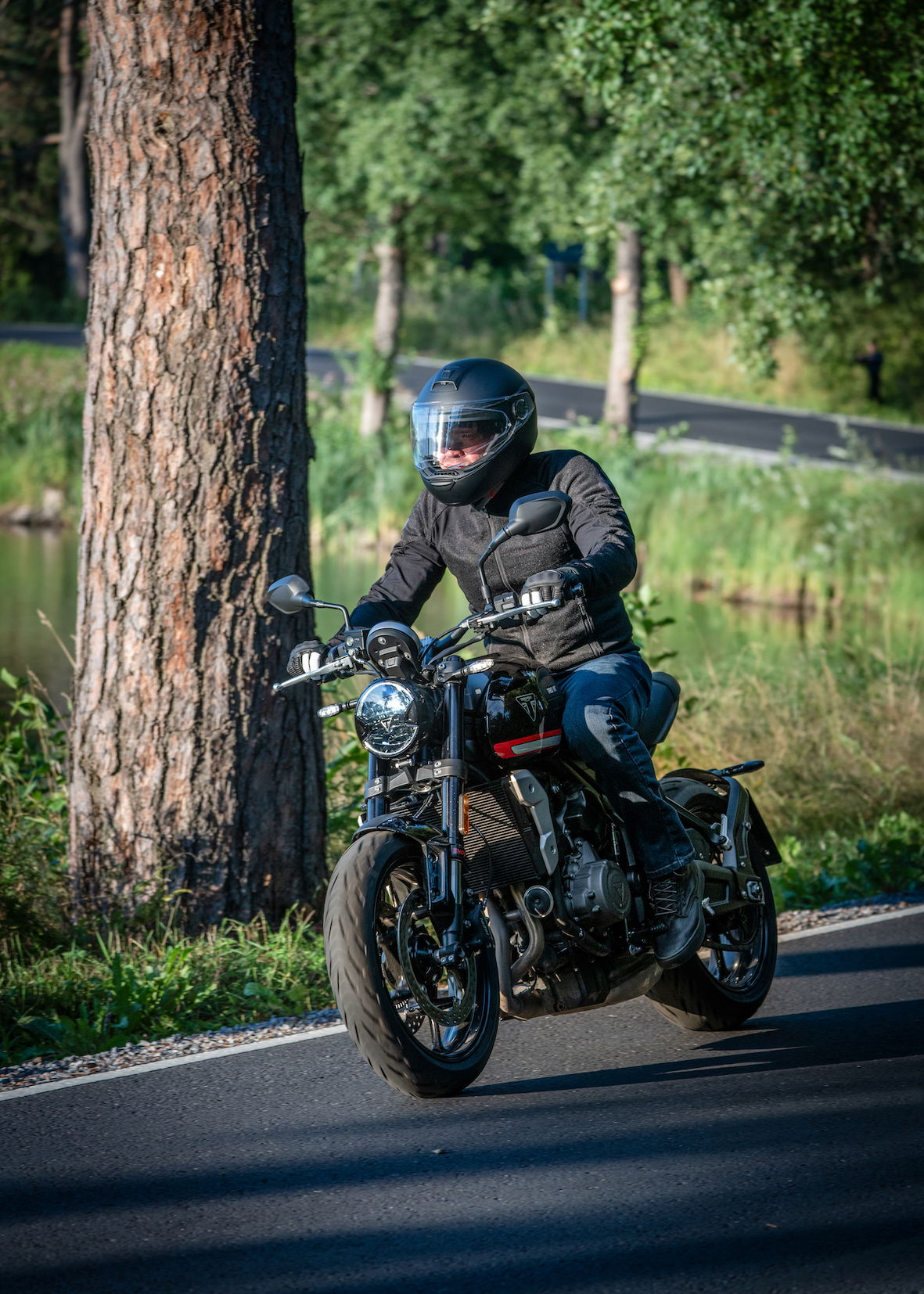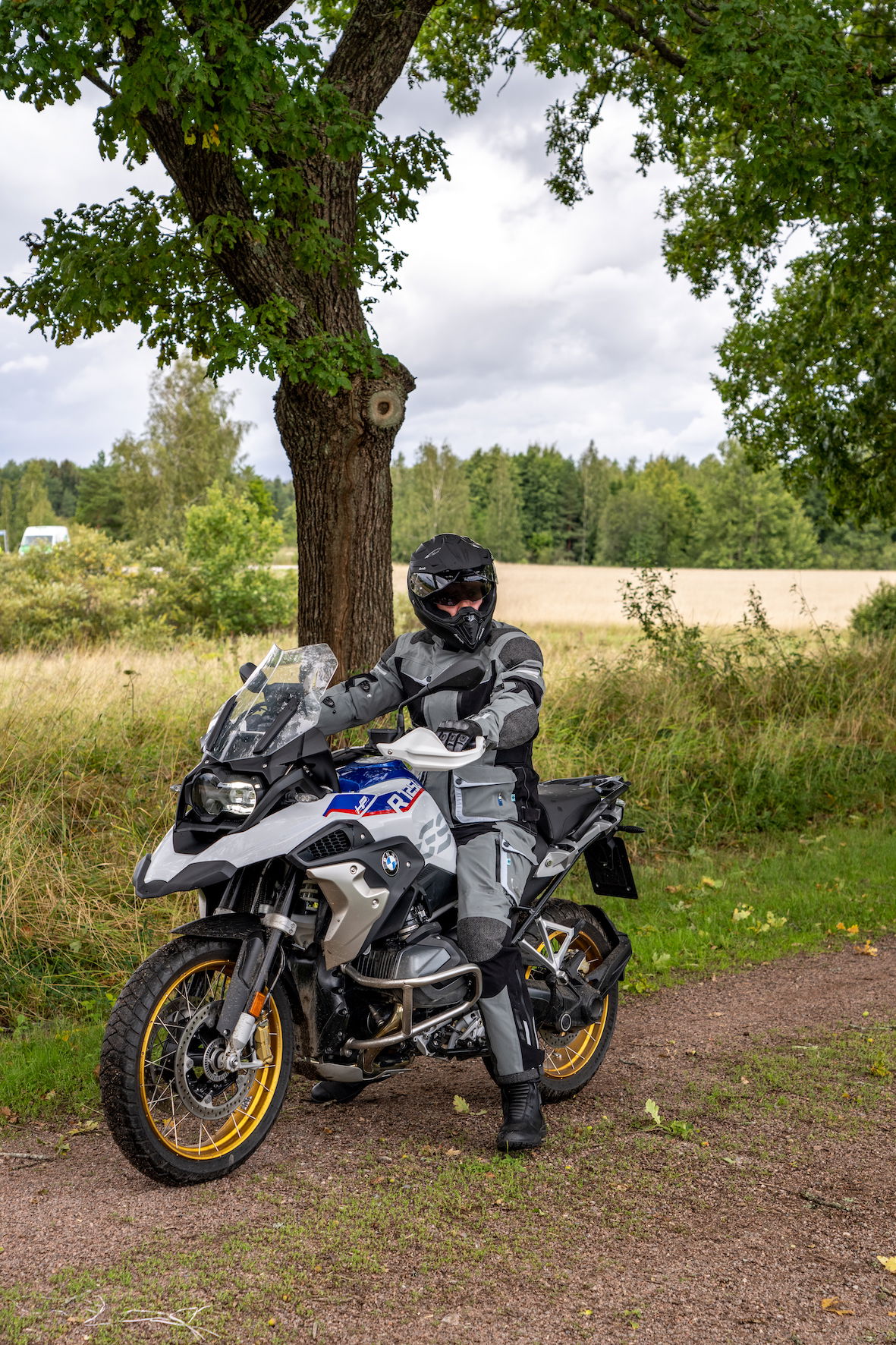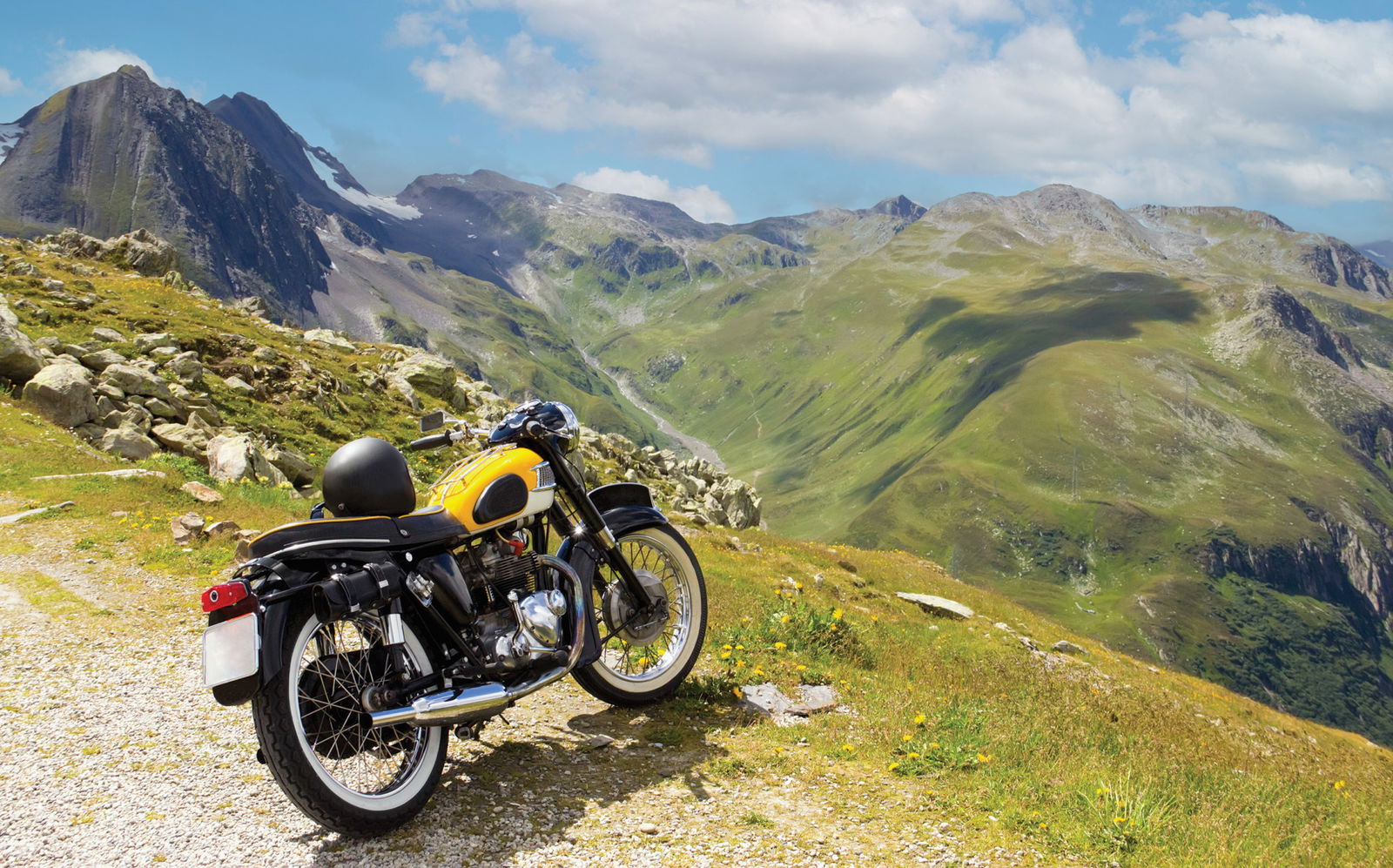VISORDOWN INSTA LIVE - YOUR CLOTHING QUESTIONS ANSWERED WITH HALVARSSONS.
Thanks to all that joined us on the 29th of December for the Visordown Instagram Live Christmas Special with Halvarssons.

MICK Wynn and Ed Miles from Halvarssons joined us to answer all your clothing questions and a few more that cropped up in conversation. This is a transcription of the video, which has been edited for clarity and conciseness. To watch the full unedited video head over to our Instagram.
Question: “Why are there no clothes for people over 6ft3?”
Ed: There are. The Italians and the UK brands tend not to do long legs, but if you look at the Northern European stuff (e.g., Halvarssons, Lindstrands) they're going to do longer legs because they're taller.
You want to look at a longer jacket as well. Quite a lot of the jackets on the market are short, we do some longer jackets as well. If you want to zip them together, we do a connection piece that extends the zip so that you don't get the stress on the jacket as well.
Q: “Storm collars for ladies on jackets. Leaking on jacket top of arms??? Thx”
Ed: We have one attached by magnets, and we have three women’s jackets next season that all have storm collars. And if it’s at the top of your arms that could be coming from the top, if you don't have a storm collar on.
Mick: It could be leaking through the neck or shoulder, or direct venting, which is excellent in the summer, but you've got to make sure it's done up in a storm and worn on the outside to allow the rain to run off the garment and not down the neck.
Ed: Or it could be just the tape's gone. (Check with your retailer for the warranty on your jacket)
Q: “The data collected in accidents is biased towards the male body, so what steps are they taking to redress the balance and design women's gear that fits with how accidents impact our bodies? Or are they still relying on outdated, biased data that isn't moving the market forward?”
Ed: I don't think there's a specific test for women's clothing. I'd have to speak to our guys in the engineering department. But they're testing on a machine as opposed to a person or dummy. It's machine-tested abrasion. All clothing has to pass CE regardless of size so materials on our products are identical for both ladies and men.

Q: New women’s clothing for next year.
Ed: Almost all of our jackets have a women’s version. Every glove we do goes down to a size five (XXXS) as well. Plus we have new jeans next year, which come in women’s fit and men's as well. AAA, which is great.
Mick: It's single-layer AAA jean, High waist in two leg lengths and not a single pink jacket.
Key Tip: Clothing should fit correctly. You should be one step away from wearing a race suit. Women’s bodies in men’s clothing aren’t safe.
Q: How to layer correctly to keep warm?
Mick: I am wearing a Merino wool jumper, on and over the top of it I've got a cotton T-shirt, which is how you see people wearing their kit when you go to a bike night.
As soon as you put cotton over the top of a Merino wool or a wicking garment, it then doesn't wick. It's going to store the moisture, and then you lose your thermal properties because you've now stored the moisture in the pockets in the cotton. So if you are hot during the day, then you ride through the day and it gets cool in the evening, you then feel the effects of storing the cold sweat on your T-shirt, in a polar expedition this sweat turns to ice and can kill.
You've got your base layer, then a merino wool top over the top of it, and then your jacket with its lining in. If it's so bloody cold that you still can't cope, plug yourself in. Get a heated jacket.
Key Tip: Never wear cotton whilst riding. That includes underwear. If you come off then you can get a skin shear from wearing cotton, or the cotton microscopically balls into a cut and then the healing process starts over the top of it. The cotton is susceptible to rotting under the skin, this must be removed (the dreaded scrubbing brush).

Q: The correct way to store kit.
Ed: Keep it in the house because of the heating. All your kit. Numerous times people have turned up and they've got a hole inside of their jacket. Mice.
Plus, your armour. A lot of armour is tested when it gets cold. (Take a look, the armour has a T plus and minus sign on it.) All our armour is tested for both cold and hot temperatures but that is voluntary. You'll find that your armour goes rock hard in a cold garage, so you should try and keep your armour at an ambient temper.
Q: “Winter gloves - leather Vs textile for warmth and waterproofing.”
Ed: It’s all windproof if it has a membrane. The benefit of leather will be protection if you fall off. Warmth will come from whatever insulators are put inside the glove and how heavy it is.
If you’ve got heated gloves, then they still need to be thick because the wind chill pulls all the heat away. You don't get much benefit in terms of a feel with the heated gloves because they're still thick and uncomfortable.
I would buy something probably 120 grams. It's probably thick as I want to go.
Q: “Why are some winter gloves so bad? I've got a decently expensive pair (£120) and my fingertips are so cold in any weather colder than about 10°.”
Mick: Yeah, it's not far off the mark. If you're commuting in a city at 10 degrees, it could be fine if you bought the right glove. If you're commuting on a carriageway, I'd say get a handguard and apply heat.
Ed: The biggest issue with cold is windchill. There's nothing harder than sitting on the motorway in the freezing cold. There's no blood flow because you're not moving. Remove the wind chill and you've got a much better chance of it working. It's a compromise all the way. The only solution is muffs, hand guards, and heated gloves to an extent.
Q: What needs washing and how often?
Check out Ed’s step-by-step video guide, from Ed’s days at Bikerheadz. (Always check the label)
Q: Physics dictates that gloves should be worn inside your jacket sleeves when raining. Bulky winter gloves are just that, too bulky to enable said tucking in. Now, I’m not looking for wizards' sleeves here, but what's Halvarssons view on this conundrum?
Mick: I think we've got to the point where they're not big and fat anymore. The new type of waterproof glove is normally now slimmer in the cuff using windstopping, breathable membranes and thermal innings measured in grams to help.
You've got to take your gloves when you're going to buy a new jacket. And then someone might advise on whether that is old-school technology. “There's too much thermal material here. You don’t need it around the wrist”. You don’t need to keep your watch warm.
Key Tip: Do not wear waterproof gloves in the summer when it's dry ever because you will pull the linings out and not all gloves are designed with insulation.
Q: “Can you talk a little bit about the advantages of the new lightweight armour versus traditional? What's the percentage weight saving, and when will the new back protectors be available for order.”
Mick: The advantages are breathability. The old back protector hits all the right testing targets, but it was a solid piece of rubber. The new one is thin, It's lighter and more flexible but still Level 2 and T+ / T- tested.
Ed: The old stuff has no holes in it. It’s not breathable. Whereas the new one has a lot of holes and is much more flexible. This is more anatomically formed.
Mick: It's tested level two, so it's a 50-kilo Newton hit in the drop system, Level 2 test only exposes 8kn to the body.

Q: “Buying kit at shows, is it better just to wait and go to the dealer?”
Mick: Most shows are too busy. You’re not going to get the same service as a specialist. That's what it's got to be, a specialist, not someone who sells motorbikes and has a little bit of a kit. We're talking about people that really know.
Ed: You need to speak to someone to make sure the armour is sitting correctly. Make sure the leg length and arm length are right. Which you couldn't do because they’re being pulled constantly backwards and forwards at a show. You will get better service in-store.
Key Tip: Go to a shop. You’re dealing with specialists, who can measure and have had proper training, so they can give advice. Most people look online because they want to get a better price, but most of the dealers will match the price anyway. So all you are doing is missing out on service.
Q: Waterproof - definition and advice.
Ed: There's a legal definition for waterproof, which is two pounds range because it's designed around gardening. However, the more pressure you put on a product, the less waterproof it's going to be. And with gardening, there's not a lot of pressure.
If you look carefully at the blurb on the jacket, its s number will say 30,000 and 10,000 etc. One of those is breathability and one of those is waterproofing. 10,000 is the minimum you're going to want.
It's very hard to make a waterproof garment because of the hole in the neck for a start, so we have people complain their neck is leaking where the hole is. And the join between the jacket and the trouser is the other big issue. There will be kit that has issues. But it’s how you look after those people afterwards.
Mick: A storm collar helps as the water beads off to the outside of the garment, when it's dry you take it off and put it in your pocket that is easy to access when the rain starts again.
Ed: We've moved over to laminate in the UK, strangely not so much in Europe. Laminate jackets must be seam taped every time you put a stitch in them. Laminates are much harder to make than traditional jackets, in which you have a whole membrane inside. No seam taping, just one piece of material.
It's very hard to make a good laminate, and as people have tried to make them cheaper, they get harder to make well. There will be issues with the laminate leaking, particularly cheap laminate.
Plus, some take out the removable waterproof membranes, thinking it is thermal. If you have a removable membrane the jacket won’t be waterproof if you remove it.
Key Tip: Don't use a heated seat or heated grips in the rain. Scenario: you've got a grip, it's got water on it, you put your hand on top of it, and then you turn the heat on. So you've now turned that water into mist, and the mist then comes through the glove because the grip is hotter than your hand.

Q: Why are most textile jackets black?
Ed: Black doesn't fade, and it sells. Every time we look at a new range and the designer shows it to us, we always say, where's the black one? Because we know if there's no black one, we'll lose a considerable number of sales.
Q: “Best two-piece to wear over formal trousers, shirts and a tie.”
Mick: Nothing. Take it off. Take it with you. (Don’t wear cotton whilst riding.) Get a roll-top waterproof bag and put it on your bike at the beginning of the week and take all your clothes to work on the first weekday.
Q: “Why isn't the motorcycle cycle clothing racket regulated like any other safety gear market now?”
Mick: It is.
Ed: It's regulated now, but it wasn't until recently. It was a professional standard. Now you've got a consumer standard. You get AAA, AA, A,B and C.
In the UK everything is called UKCA, but that's not going to be coming until 2024. That's going to be essentially a copy of the EU regulations. So when you buy motorcycle gear, you'll see the European label, and then underneath it'll have the UKCA in on it as well.
Ed: The EU armour standard is on the armour. In a square box with a picture of a motorcycle in it, and then it'll say 1621-1-2 and then it'll have two other boxes. In those boxes, you'll have T plus and T minus or you'll have nothing. The level is mandatory. So you have to have a two or a one depending on what level it is that's mandatory for EU law.
Mick: You've got a AAA standard, so it's AAA, AA, A, B, C. C undergarments and B without protectors. A is urban, AA is the touring standard, AAA for heavy professional use and Racing. And we also want it to be comfortable, right?
Q: “Single layer versus double layer jeans.”
Ed: Single layer if you want comfort. Double layer if you want protection. That’s generally the way it works.
Mick: We've pretty much designed a jean. We’ve got a blue jean with no lines, no words, nothing on it. They look like street jeans and they're slim fit.
We've got a stretch single layer with the right armour, a high back for the women, and a zip that zips to the jacket. So you don’t need a belt. All AAA and Level 2 T+ and T-armour.
Final thoughts:
Buying the right kit is just a case of making sure you get the right advice and checking out the materials. Do a little bit of research before you go and see the dealer. And then go in there and have a plan of what you're going to do. How are you going to use the jacket? How many miles are you going to do?
Be prepared that if you are doing big mileage or touring, you're not going to be buying a hundred-pound jacket. You're going to need to spend considerably more than that to get something that's going to do the job. If you end up with a £199 or £149 and you're going to go and do 5,000 to 10,000 miles a year, it's not going to cut it. So just be aware that they will help you in the store.
They're going to try and sell you an expensive jacket. But if you know that all the riding, you're doing is just riding to college every day, 10 miles, then you don't need a top-of-the-range.
Be aware of what you want to do. Exactly what riding you're doing and when you're going to ride. Weather, the conditions. And take your boots and gloves.
Key Tip! Give Mick and Ed a message with all your clothing questions and queries.

